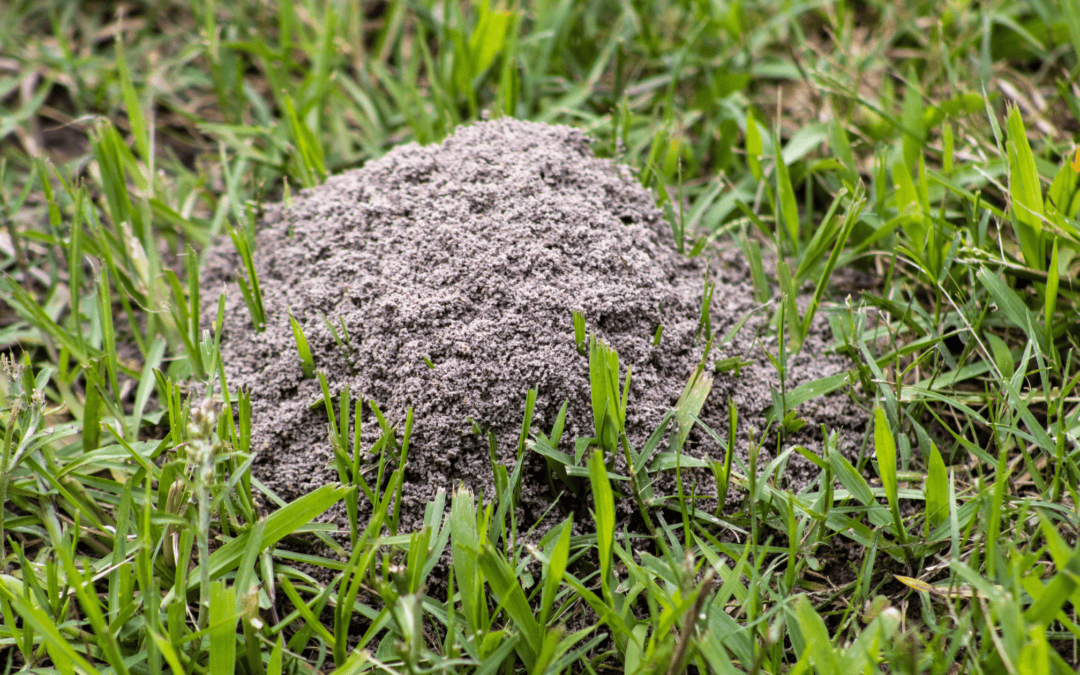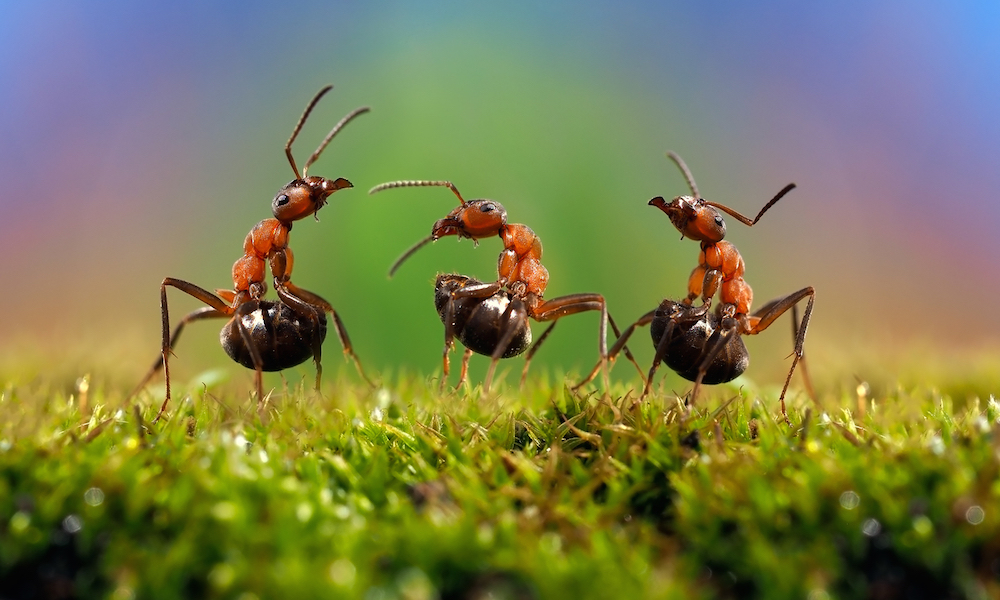READY TO GET STARTED?
REQUEST A FREE ESTIMATE
Fill out the form below or call (888) 466-7849 for a free, no-obligation estimate.

If you live in Georgia, you’re likely familiar with the nuisance of fire ants. These tiny terrors can turn a peaceful yard into a hazardous area, causing pain and discomfort with their bites. Understanding how to identify, control, and prevent fire ants is crucial for maintaining a safe and enjoyable outdoor space. This blog will guide you through the process of detecting fire ants, understanding why they’re harmful, and taking effective measures to control them.
Fire ants, particularly the red imported fire ants, are notorious for their painful bites and aggressive behavior. When disturbed, these ants sting multiple times, injecting venom that causes burning pain, itching, and sometimes severe allergic reactions. For individuals with allergies, their bites can be life-threatening and require immediate medical attention.
Beyond their painful stings, these ants pose significant threats to pets, livestock, and wildlife. They can damage crops and invade electrical equipment, causing costly repairs. Thus, managing fire ant infestations is essential not only for personal comfort but also for protecting your property and health.
Fire ants typically nest in sunny, open areas. They prefer well-drained soils and are commonly found in lawns, parks, fields, and pastures. Their nests, or mounds, are usually dome-shaped and can reach up to 18 inches in height. These mounds have no central opening like other ant hills; instead, the ants enter and exit through underground tunnels. In the southeastern United States, including Georgia, these ant mounds are particularly common due to the region’s warm climate.
Identifying a fire ant infestation early can prevent a small problem from becoming a large one. Here are some telltale signs that you might have them in your yard:
If you’ve confirmed the presence of this type of ants, taking immediate action is crucial. Here are effective methods to get rid of fire ants:
Preventing these aggressive ants from invading your yard is always better than dealing with an existing infestation. Here are some tips to keep them at bay:
Fire ants are a significant pest in Georgia, but with vigilance and proactive measures, you can keep your yard safe. Recognize the signs of fire ants, understand why they’re harmful, and use effective methods to control and prevent infestations. For persistent issues, don’t hesitate to contact a professional pest control company for expert assistance. By staying informed and prepared, you can enjoy a fire ant-free yard all year round.

Ants are one of the most common household pest invaders and often one of the hardest to get rid of. Here’s why:
There are over 12,000 species of ants worldwide and about 1,000 here in the U.S. They’re social insects so they live in large colonies, some with millions of ants depending on the species. Ant queens can survive for several years and have millions of ant offspring, compared to many other pests that tend to have shorter lifespans and lower reproduction rates. So it’s likely you have several ant colonies around your home with queens that are reproducing, male ants to mate with the queens, soldier ants to protect the queens and babies, and worker ants to gather food and build anthills, mounds, and nests.
So where are these nests? Larger ant colonies require complex nests that often take up large amounts of space, often covering an acre of land or more! Their nests are usually underground with mounds or anthills that they use to gain access to the nest, in walls, and under fallen trees, rocks, or debris.
The most effective way to get rid of ants or prevent ants is to go after the colony’s queen. An ant colony will usually only survive for a few weeks to months, depending on the colony’s size, after a queen dies since the queen is the only ant in the colony able to reproduce. And colonies rarely replace a queen, therefore the entire colony is dismantled and without purpose. This process can happen naturally, when other ant colonies invade one another, or through targeted, integrated pest management (IPM) techniques. While on-contact pesticides can be effective in killing the ants you’re seeing, they do nothing to eliminate the thousands of ants you don’t see, hiding out in the colony. But because ants work in an organized system, we can “feed” the worker ants traveling to and from the colony poisonous baits. These baits usually contain a sweet substance that ants are attracted to and will take back to their colony to feed to the others (queen included). And because most baits are slow-acting, the ants have time to distribute the poisonous food to the colony before the bait begins to work. When the ants begin to die, the bait continues to work to eliminate other ants in the colony since the dead ants will be eaten by the colony, thereby continuing the spread of poison throughout the colony. This process of colony elimination can take a few days up to 2 or 3 weeks, depending on the size of the colony.
In order to get rid of ants through colony elimination, it’s important that baits are placed in the right areas and that you allow enough time for the bait to work before cleaning up dying or dead ants. If you’re unsure which products to use or how and where to use ant baits, contact your local exterminator. A pest control professional will inspect your home for ant entry points and provide you with a treatment plan that works now and for future ant prevention.

Ants are one of the most common household pest invaders and often one of the hardest to get rid of. Here’s why:
There are over 12,000 species of ants worldwide and about 1,000 here in the U.S. They’re social insects so they live in large colonies, some with millions of ants depending on the species. Ant queens can survive for several years and have millions of ant offspring, compared to many other pests that tend to have shorter lifespans and lower reproduction rates. So it’s likely you have several ant colonies around your home with queens that are reproducing, male ants to mate with the queens, soldier ants to protect the queens and babies, and worker ants to gather food and build anthills, mounds, and nests.
So where are these nests? Larger ant colonies require complex nests that often take up large amounts of space, often covering an acre of land or more! Their nests are usually underground with mounds or anthills that they use to gain access to the nest, in walls, and under fallen trees, rocks, or debris.
The most effective way to get rid of ants or prevent ants is to go after the colony’s queen. An ant colony will usually only survive for a few weeks to months, depending on the colony’s size, after a queen dies since the queen is the only ant in the colony able to reproduce. And colonies rarely replace a queen, therefore the entire colony is dismantled and without purpose. This process can happen naturally, when other ant colonies invade one another, or through targeted, integrated pest management (IPM) techniques. While on-contact pesticides can be effective in killing the ants you’re seeing, they do nothing to eliminate the thousands of ants you don’t see, hiding out in the colony. But because ants work in an organized system, we can “feed” the worker ants traveling to and from the colony poisonous baits. These baits usually contain a sweet substance that ants are attracted to and will take back to their colony to feed to the others (queen included). And because most baits are slow-acting, the ants have time to distribute the poisonous food to the colony before the bait begins to work. When the ants begin to die, the bait continues to work to eliminate other ants in the colony since the dead ants will be eaten by the colony, thereby continuing the spread of poison throughout the colony. This process of colony elimination can take a few days up to 2 or 3 weeks, depending on the size of the colony.
In order to get rid of ants through colony elimination, it’s important that baits are placed in the right areas and that you allow enough time for the bait to work before cleaning up dying or dead ants. If you’re unsure which products to use or how and where to use ant baits, contact your local exterminator. A pest control professional will inspect your home for ant entry points and provide you with a treatment plan that works now and for future ant prevention.